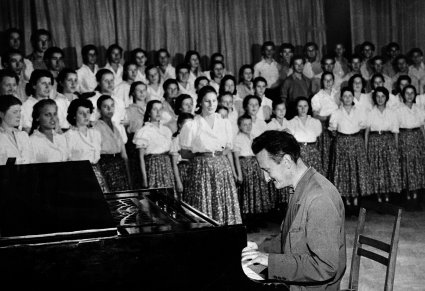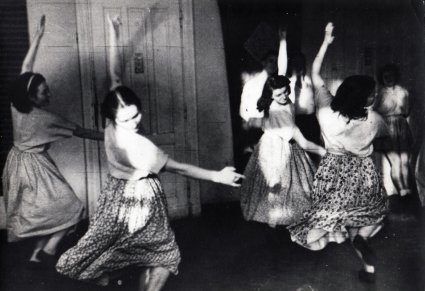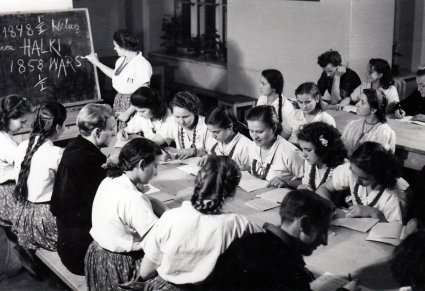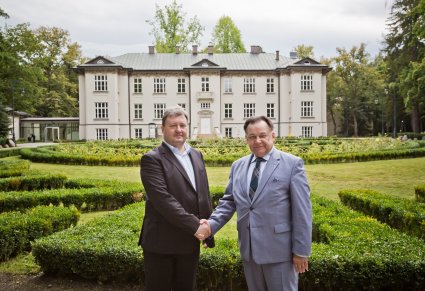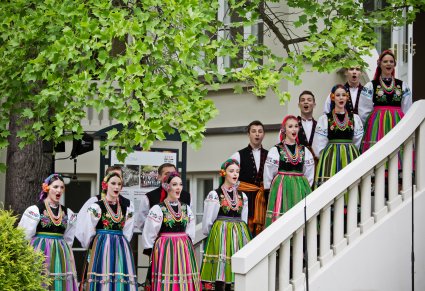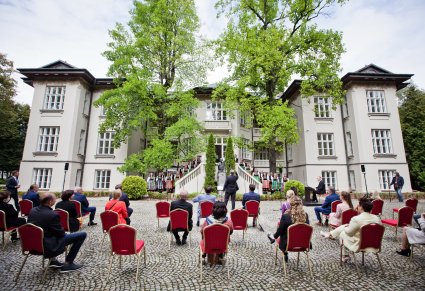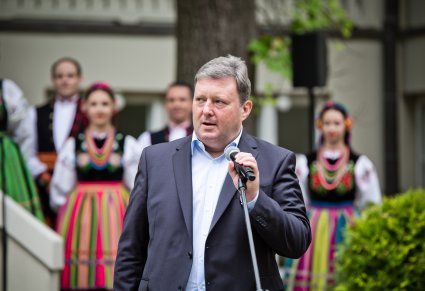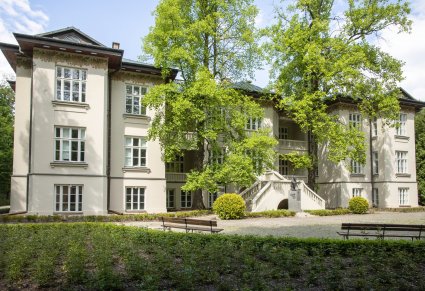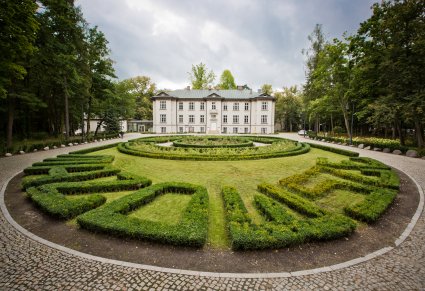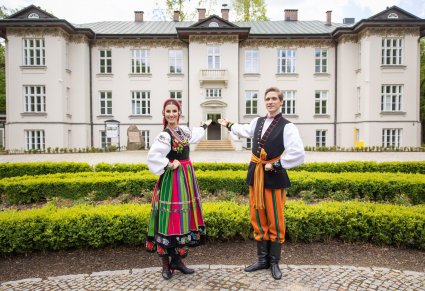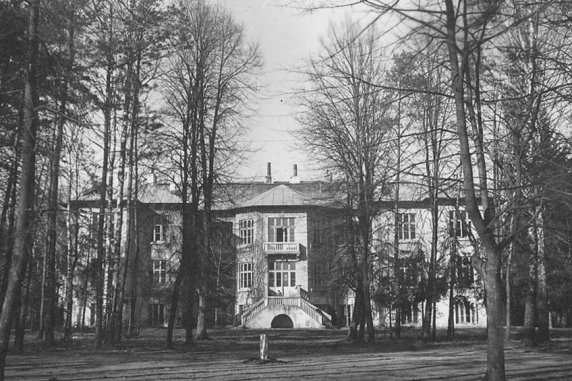
Karolin Palace
The history of Karolin Palace can be traced back to the early twentieth century, when the Association for Medical Assistance and Care of the Mentally and Nervously Sick elected to build a sanatorium on land it had been granted by local landowner, Feliks Bobrowski. Construction began in 1909 with support from his widow, Karolina Bobrowska, from whom Karolin takes its name. The palace, designed by architect Czesław Domaniewski, was completed in 1911. Lacking in funds after World War I, the sanatorium stopped functioning. The palace became home to the Russian Red Cross and in 1923 the building was leased to the Benevolent Society.
Visitors returned to Karolin in 1932, following extensive renovation work. As well as offering treatment to sick patients, the centre started to let rooms to holiday makers and function in a commercial capacity.
Visitors returned to Karolin in 1932, following extensive renovation work. As well as offering treatment to sick patients, the centre started to let rooms to holiday makers and function in a commercial capacity.
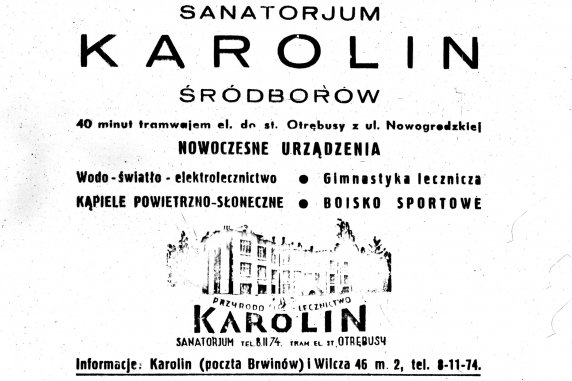
Karolin Sanatorium
Over time, Karolin became one of the more expensive health retreats in Poland and attracted artists and writers seeking to escape the bustle of the city. Mira Zimińska and her friends were among its visitors even before the Second World War.
The Association for Medical Assistance and Care of the Mentally and Nervously Sick was dissolved in 1947. Karolin Palace was intended to house a hospital or sanatorium for high-ranking state officials, yet ultimately a plan arose for it to become the headquarters for a new national folk song and dance ensemble, which was to be established by Tadeusz Sygietyński. In late 1948, Karolin opened its doors to the young people who were to become its first performers. When Mazowsze National Folk Song and Dance Ensemble officially began work in 1949, the palace in its entirety was given over for its use.
The Association for Medical Assistance and Care of the Mentally and Nervously Sick was dissolved in 1947. Karolin Palace was intended to house a hospital or sanatorium for high-ranking state officials, yet ultimately a plan arose for it to become the headquarters for a new national folk song and dance ensemble, which was to be established by Tadeusz Sygietyński. In late 1948, Karolin opened its doors to the young people who were to become its first performers. When Mazowsze National Folk Song and Dance Ensemble officially began work in 1949, the palace in its entirety was given over for its use.
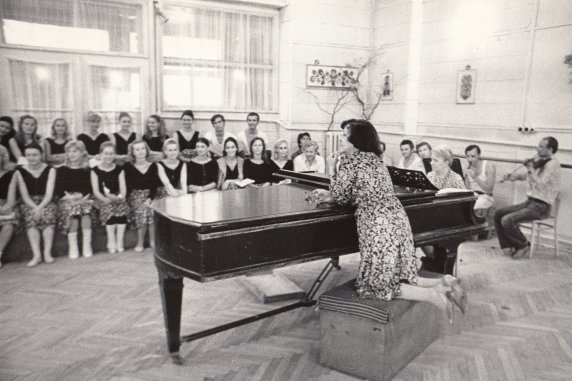
Karolin - the Heart of Mazowsze
In the early 1950s, thanks to the efforts of Tadeusz Sygietyński and Mira Zimińska-Sygietyńska, Karolin Palace became a place of work and education as well as a second home for young people from all over Poland. The post-war years tell the story of the successes of several generations of Polish artists, but also of endeavours to care for and develop the ensemble’s headquarters- the heart of Mazowsze. In the early years, general schooling took place at the palace, as did dance, music theory, singing and instrumental lessons. Members’ bedrooms were located on the upper floors of the palace, while the kitchen, canteen and storerooms could be found in the basement. A separate room was earmarked for the practice of traditional crafts such as embroidery and paper cutting. Over time, the loggias on the ground and first floor started to fill up with gifts and souvenirs from Mazowsze’s many overseas tours. After years of intensive use, when the ensemble’s new headquarters were built in 2009, the historic building was set aside for office space and the storage and display of Mazowsze’s collections.
‘Mazowsze’ – The Early Days
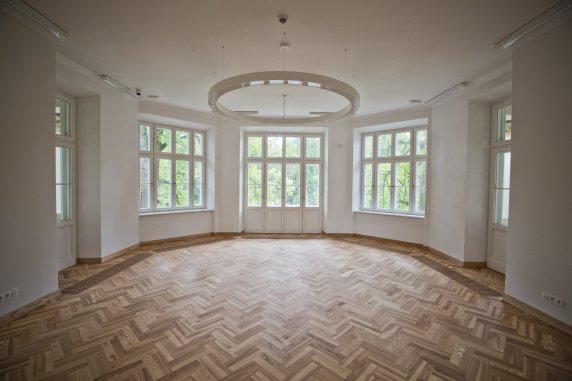
The Restoration and Renewal of Karolin Palace
In 2017, in order to realise Karolin’s potential as a place of natural and cultural value as well as to extend the educational activities of the ensemble, work began on the regeneration of Karolin Palace. The project was the beneficiary of European Union funding through the Infrastructure and Environment Operational Programme 2014-2020, Priority Axis VIII: Protection of Cultural Heritage and Development of Cultural Resources, and was carried out with support from the Office of the Marshal of the Mazowieckie Voivodeship and the Ministry of Culture and National Heritage. Renovation and modernisation work was completed in 2020, and the opening of the centre for Polish Folklore in 2021 marked a new chapter in the history of Karolin Palace.


